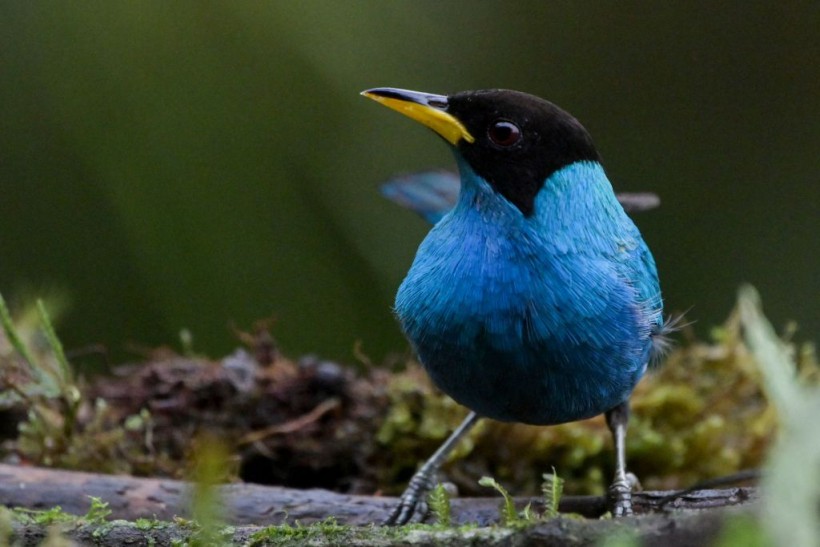The latest report found extreme sightings of Green Honeycreeper (Chlorophanes spiza) in Caldas in Columbia. The colorful bird is half-male and female, exhibiting the amazing bilateral gynandromorph.
Bilateral gynandromorphy is known to have male and female characteristics for animals in the wild. In the avian species, the condition has been spotted in many species.
The condition also occurs due to an error in egg meiosis with double fertilization. Studies are essential to understand better the unusual appearance and behavior of the said animals.
Beautiful Rare Half Male, Female Bird

A photo of Green honeycreeper (Chlorophanes spiza). Researchers discovered sightings of a rare half-male and female bird species in bilateral gynandromorph in Columbia. The bird is extremely rare with a colorful appearance. The research findings were published in the Journal of Field Ornithology. The bird population thrives in tropical lowland habitats with bright plumage, living in gardens, forests and plantations.
In the new report, the researcher recorded and captured rare images of the Green Honeycreeper, showing half male and female characteristics.
Zoologists from the University of Otago reported the unusual appearance of the Green Honeycreeper in Columbia.
Spotting bilateral gynandromorph species is considered rare, especially in New Zealand. Professor Hamish Spencer saw the striking color of Green Honeycreeper in Columbia.
The research findings were published in the Journal of Field Ornithology. The bird population thrives in tropical lowland habitats with bright plumage, living in gardens, forests and plantations.
The male bird is recognized by their blue-green plumage, while the female species has apple-green plumage. They are also found in Eastern Brazil, Southern Mexico, Peru, Bolivia and Columbia.
They reproduce from February to August.
They love to eat fruits and insects in gardens. To catch for prey, the birds are fast-moving in rapid sallies.
Also Read: 5 Examples of Animal Sexual Dimorphism From Mandrills to African Lions
Sexual Dimorphism in Animals: What You Should Know
Animals are identifiable by their colors and behaviors. The male and female animals in the wild may become different in appearance and size.
According to recent reports, they can undergo sexual dimorphism, showing a noticeable difference in the animal kingdom.
The unique sexual dimorphism shows the amazing qualities of animals in the wild.
Here are some examples of amazing sexual dimorphism, from birds, elephant seals and Mandarin ducks.
The African lions are known for their fierce looks in the wild. A female and male lion are recognizable based on their looks. The animals have different physiology and behaviors.
The male lion can weigh up to 570 pounds, while the lioness is only 400 pounds. The lion has a mane on their neck.
Meanwhile, the male and female pheasants are recognizable by their colors. The male one is more colorful and bigger.
Furthermore, the mandrills can be differentiated by their weight. The female is smaller, reaching up to 25 pounds. Lastly, the male mandarin ducks can look more bright and colorful than the female mandarin.
Related Article: Top 5 Deadliest Animals in the World That Kill Millions Every Year
For more similar stories, don't forget to follow Nature World News.
© 2024 NatureWorldNews.com All rights reserved. Do not reproduce without permission.




![Roundworms with Short Memories 'Stop Forgetting' When Frozen or Given Lithium [Study]](https://1471793142.rsc.cdn77.org/data/thumbs/full/70295/280/157/50/40/roundworms-with-short-memories-stop-forgetting-when-frozen-or-given-lithium-study.jpg)
